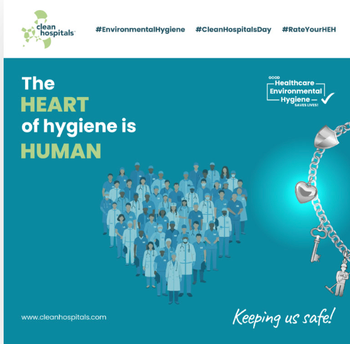
Study Identifies Sepsis Symptoms That Lead to Death
Using patient records from 210,289 hospital visits between 2013 and 2016, Drexel University researchers have identified the specific symptoms that put patients at the greatest risk of dying from sepsis -- and they're not what many clinicians might think.
Sepsis, a life-threatening condition caused by the body's response to an infection, is one of the most frequent causes of death in the hospital and one of the most expensive conditions to treat. Early recognition can save lives, but patients require close, consistent monitoring, and providers can easily miss the insidious, gradual signs of the disease. Complicating matters, the definition of sepsis is in dispute amongst experts. This can lead to muddied treatment guidelines and a lack of care for patients whose symptoms do not fit the standard checklist for a sepsis diagnosis, but who, in fact, may be at high risk for death.
The new study by Drexel researchers, published this month in Critical Care, shows that impaired kidney function is one of the leading predictors of sepsis patient mortality. The data offers an advanced analytical model for detecting early warning signs of sepsis and for differentiating between different organ dysfunctions' contribution to in-hospital morality.
"We now have large-scale evidence that many of these organ system failures that are typically underappreciated - particularly the renal and respiratory systems - actually have the highest association with death," said study co-principal investigator Ryan Arnold, MD, an emergency medicine doctor and faculty member at Drexel College of Medicine. "That means that symptoms related to these systems need to be raising a red flag for doctors. We're saying, 'Hey, this is the type of patient you need to be paying more attention to.'"
The researchers found that the more well-known symptoms of sepsis, such as low blood pressure, were linked to lower mortality rates in the population they studied.
"That likely speaks more to the health care providers' response to the symptom, than the low blood pressure itself actually being a protective factor," Arnold added. "With sepsis, patients generally don't fall off of a cliff. Instead, it's a day by day, gradual deterioration. Maybe someone has a small increase in creatinine today, and tomorrow it's a little worse. Those subtle changes that don't get detected, we found, lead to death."
To quantify the association between organ dysfunctions and health outcomes, the research team used retrospective Electronic Health Record data for adult patients hospitalized within Delaware's Christiana Care Health System from July 2013 to April 2016. They analyzed the relationship between in-hospital mortality and symptoms with seven organ systems: cardiovascular, metabolic, hematopoietic, nervous, gastrointestinal, renal and respiratory.
Of the 210,289 visits during the study period, 62,057 patients (30 percent) were treated for an infection, and 48,680 (78 percent) experienced organ dysfunction. Of the patients treated for an infection, 1,955 (3 percent) died during this period. Patients with worsening kidney function (increase in creatinine levels by 50 percent from baseline) had the highest mortality rate (17 percent), followed by mechanical ventilation requirement (13 percent). Patients with hypotension had the lowest incidents of death. The researchers also found that treating patients for an infection within 24 hours of being admitted to the hospital significantly lowered their risk of dying.
The study paves the way for the creation of a clinical decision support system that can give providers real-time alerts about patients that might be high-risk for dying from sepsis, according to study co-principal investigator Muge Capan, PhD, an associate clinical professor at Drexel's LeBow College of Business.
"The integration of analytics and clinical, translational research provides insight into developing smart and connected systems that support data-driven and personalized management of sepsis," Capan said.
The research team is now building a model that assigns different "weighted risk" to individual organ system dysfunctions that are observed simultaneously, allowing clinicians to plug in combinations of symptoms and create an individualized picture for each sepsis patient. For instance, a patient with dysfunction of both kidney and respiratory systems, would require more close monitoring than a patient suffering from kidney dysfunction and low blood pressure.
"Now, when a new patient walks into the hospital, we can use our math and analytic skills to match that patient's fingerprint and really see: 'What is that person's individualized risk of in-hospital death?' and 'What is that person's individual risk of developing septic shock?' That is very useful, and very exciting," Capan said.
Source: Drexel University
Newsletter
Stay prepared and protected with Infection Control Today's newsletter, delivering essential updates, best practices, and expert insights for infection preventionists.





